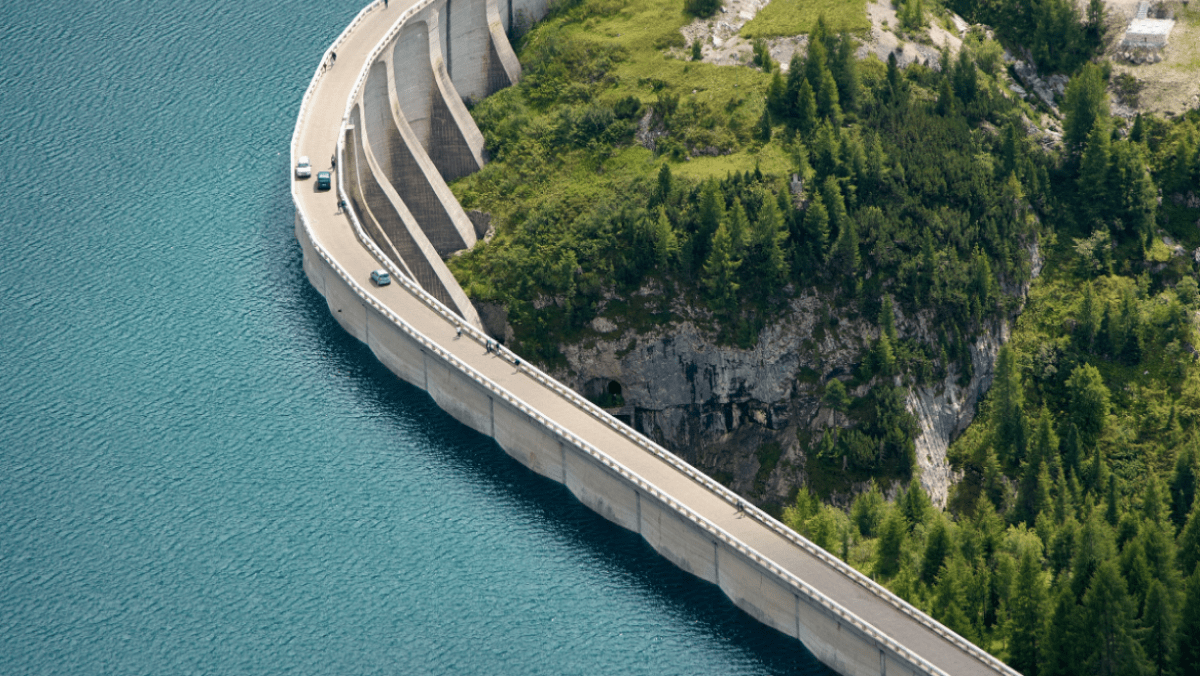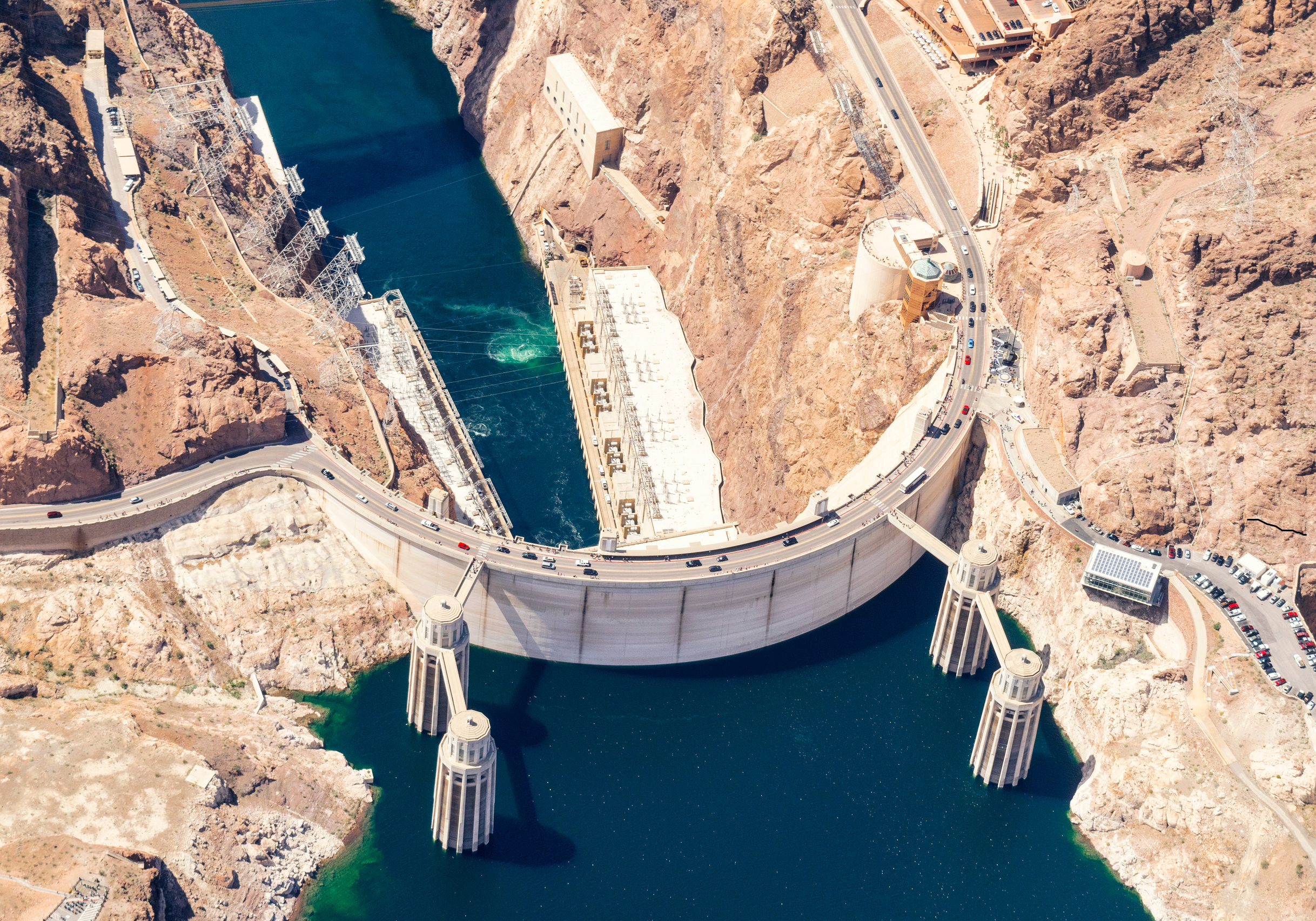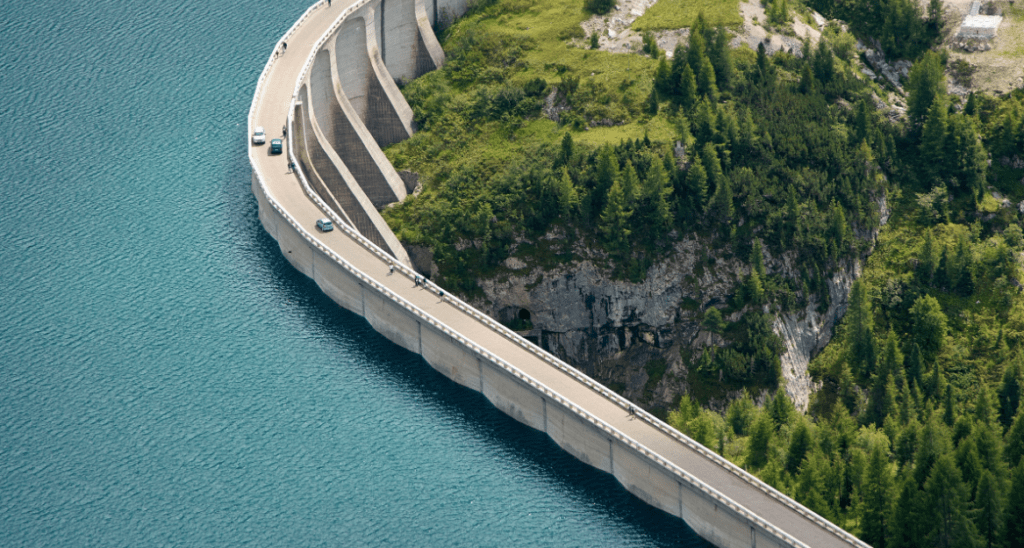Types of Dams : Dams are large impounding structure or barriers which are outlined and constructed on a river or stream. Dams provide a wide variety of environmental, economic, and social benefits. The configuration and type of dam built should fulfil one or more purposes. This article is about the criteria for the selection of dam types.
Types of dams – Selection criteria
While selecting the type of dams the following criteria is taken into consideration. Geology, Topography, Hydrology, etc are the essential requirements for planning and selecting dam types.
- Geological features like slopes, valleys, mountains, channels, etc. to be taken into account while selecting the types of dams.
- The topography of the dam site has to ensure sufficient slope on the upstream side of the dam. For small dams narrow sites to be chosen. For low-lying areas, arch dams are more suitable. Earthen dams are preferred in steep areas.
- The hydrological data like groundwater table, precipitation, stream flow, etc. serves as a perfect guideline.
- In rivers, streams, etc. dams serve as flood prevention mechanisms. They collect, store, and manages floods with the help of reservoirs.
- Since dams are massive structures, the materials required for construction should be available nearby. The soil wrenched from the reservoir can be used as earth fill and reduces transportation costs.
- The foundation of the dam must have a uniform bearing capacity. Earthen dams are good for gravel-type soils. For clay-type soils, there are chances of unequal settlement. Therefore foundations have to be designed with strict precautions and factors of safety.
- Depending on the height of the location, dams are selected. Concrete gravity dams have high altitudes. Earthen dams have less elevation.
- Earthquake zone is another criterion for dam type selection. An earthquake can cause structural failure and damages in dams. Therefore Seismic analysis and intensity to be investigated before choosing the type.
Types of dams
Dams are broadly classified into three categories based on the following criteria.
- Based on function
- Classification based on the structure
- Classification based on the material used
Also read : Dams – Importance – Selection Criteria, Advantages, Disadvantages.
Types of dams – Based on Functions
Based on function, Dams are grouped into four types.
- Storage dam
- Diversion dam
- Detention dam
- Cofferdam
Storage Dam
Storage dams are the most commonly used dam type constructed across high water discharge rivers and streams for water storage purposes. This surplus water stored in the upstream area is utilised for hydroelectricity, human needs, water for local wildlife, recreation, domestic water supply schemes, irrigation purpose, etc.
Diversion Dam
The diversion dam is used to divert water and is also known as weirs or barriers. These dam types can divert water from a wide to a fine-scale which provides the requisite pressure to push water through channels and conduits. Diversion dams are low-height dams having a small upstream storage area.
Detention Dam
The detention dams impede the flow of water in the downstream area. These dams serve as flood controllers by retarding the downstream flows. Flash flood chances to some extent by providing detention dams. They are also known as debris dams named debris dams as it retards sediments like debris.
Cofferdams
Cofferdams are temporary enclosures used for evacuating water from construction sites in marine or wet areas involving bridge rehabilitation, piling works, oil exploration works, bridge foundations, etc. The main purpose of cofferdams is to provide a dry working area by retaining soil and water. They are portable and reusable structures.
Types of Dams – Based on structure
Based on the type of structure used for construction of dams the dam typse are classified as follows.
- Gravity dams
- Arch dams
- Buttress dam
- Embankment dam
Gravity Dam
Gravity dams are massive solid masonry or concrete structures designed to hold a huge volume of water. The horizontal trust of water and gravity holds the dam structure to the ground. It has a triangular profile. The strength of foundation rock is contemplated in the design of this dam.
Arch Dam
An arch dam is a concrete dam that has a curved upstream in the plan.
An arch dam works on the principle of hydrostatic pressure exerted into the curved structure straightens the structure and strengthens by pushing the structure into the foundations or abutments. Thus the hydrostatic pressure is equalized by arch actions.
Compared to gravity dams, the Arch dam bears less weight and got thin walls. An arch dam is built-in narrow gorges and is arch-shaped.
Arch dams are economical and considerable.
Buttress Dams
Buttress dams assemble in bowed or straight shape. They got a sloping deck supported by buttresses at regular intervals. Mostly they are preferred for soil with poor bearing capacity. The main components of the dam include a face slab, standing slab, and base slab.
This dam provides stability and endurance. The pressure in the deck is held by the buttress.
Embankment dam
Embankment dams are antiquated types of dams built with natural materials like rock, soil, sand, clay, etc, and industrial waste materials like compacted plastics, etc. They are built-in wide valleys. They are of two types; Earth fills and rock fill. The core consists of impermeable materials.
Reinforced concrete and asphalt concrete are used in rock fill dams.
Types of Dams – Based on Materials Used.
Based on material used, Dams are classified as
- Masonry dams
- Steel dams
- Timber dams
Masonry dams
Types of Dams built by using earth, stone/bricks and joined with mortar are known as masonry dams. In a masonry dam, seepage is less.
Steel dams
A steel dam are types of dams that is made of steel, rather than the more common masonry, earthworks, concrete or timber construction materials, They possess good strength when compared to other dams. On the downstream side, the footing is provided at frequent intervals. For construction, it uses steel trusses and anchors.
Timber dams
These are temporary dams made of wood. Diversion of water is the main function of this dam. They have a short life span and limited height.
Concrete Dams
Concrete dams are large structures and are constructed using cementitious materials like concrete etc. They possess good strength. The construction cost of this dam is high.




Comments are closed.